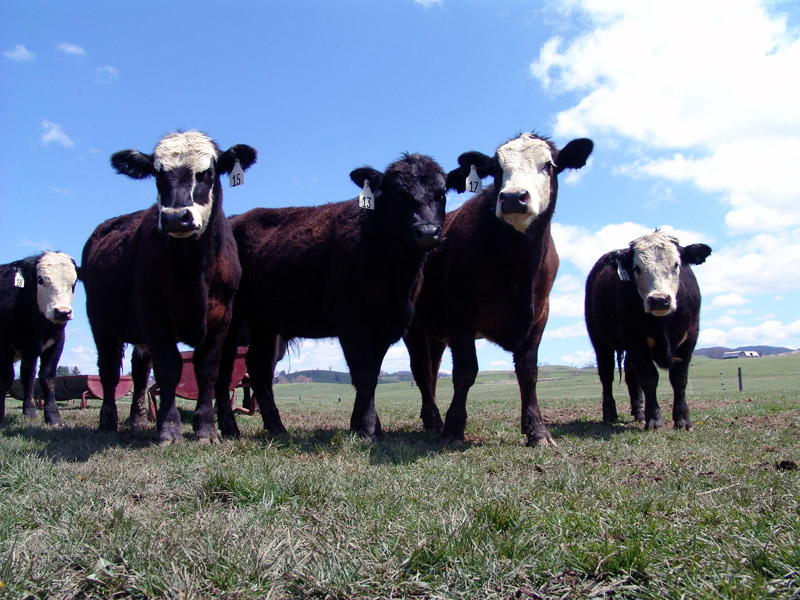
Agricultural News
Assess Your Damage as You Consider Pasture Renewal After Drought
Thu, 12 Jan 2012 17:52:49 CST
 Following drought, stand damage is readily apparent even on well-managed pastures. Since the drought occurred when warm-season grass pastures were actively growing, it is almost certain that root growth was restricted, in addition to the more obvious decline in forage yield. Daren Redfearn of Oklahoma State University says that the extent of stand damage due to differences in soil types, fertility practices, grazing management, pasture species, and harvest management are somewhat easy to determine.
Following drought, stand damage is readily apparent even on well-managed pastures. Since the drought occurred when warm-season grass pastures were actively growing, it is almost certain that root growth was restricted, in addition to the more obvious decline in forage yield. Daren Redfearn of Oklahoma State University says that the extent of stand damage due to differences in soil types, fertility practices, grazing management, pasture species, and harvest management are somewhat easy to determine.
Soil type, fertility, grazing management
Pastures on lighter soils generally showed greater damage than stands on heavier soils. Many pastures were not fertilized because of the recent drought conditions. Pastures with lower fertility levels that were overgrazed appeared to have greater damage than non-grazed pastures.
Pasture species
Bermudagrass pastures had varying degrees of damage. Recently sprigged bermudagrass pastures had sparse growth. Established bermudagrass pastures that were grazed for the majority of the summer had moderate to severe degrees of damage. This was almost entirely due to stocking rate. The bermudagrass pastures managed solely for hay production were less damaged than grazed pastures. This was presumably due to longer growth periods during the drought that excluded grazing for several months during the drought.
Old World bluestem pastures had varying degrees damage, similar to the bermudagrass pastures. Again, this was mostly due stocking rate. There were very few Old World bluestem pastures that were managed solely for hay production. Thus, the extent of damage on Old World bluestems pastures was greater than what was observed for bermudagrass.
Since weeping lovegrass pastures are primarily restricted to lighter soils, many stands were severely damaged due to drought. Weeping lovegrass pastures that were grazed typically had some dead crowns, especially in thicker stands. In the stands that were thin, weeping lovegrass did not appear to have substantial crown death. These differences were probably due to less plant competition for moisture in the thin stands.
Stand damage
Slightly damaged stands (less than 30% stand loss) should recover quickly with weed control, proper fertility, and deferred grazing or harvest once satisfactory growing conditions return. Stands that are moderately damaged (between 30% and 60% stand loss) should fully recover with weed control, proper fertility, and deferred grazing or harvest. There are many tillers and seed that will aid in stand recovery. If these stands remain thin into the fall, it may be preferable to overseed with an adapted pasture legume or winter annual grasses. Severely damaged stands (greater than 60% stand loss) are going to require an enormous level of patience for adequate recovery. If stands are thin in the fall, it may be preferable to overseed legumes or winter annual grasses.
All perennial grasses have growth mechanisms that contribute to recovery of previously established stands. Bermudagrass is unique in that it has stolons, in addition to rhizomes. Although most of the stolons are likely dead, there are many rhizomes in the plant crown that can produce new growth. The Old World bluestems and weeping lovegrass have rhizomes, but each of these plants also produces many seed in most years. Similar to the bermudagrass, the rhizomes of the Old World bluestems and weeping lovegrass will produce new growth. Much of the seed produced will be viable and capable of germinating and producing new plants if adequate moisture is present.
The best approach to post-drought pasture management is to reduce competition and focus on moisture conservation and use. First and most importantly, it is necessary that aggressive weed control measures are used to reduce competition for moisture and nutrients. This allows the desirable plants the best opportunity for successful re-establishment of rhizomes and stolons in bermudagrass pastures and rhizomes along with germination of the seedbank in Old World bluestem and weeping lovegrass pastures. Secondly, follow fertilization based on a proper soil test. Since our recovery approach is to manage many of these pastures as a "new" seeding, it is important that our initial fertilization focus is on adding phosphorus (P) to stimulate root growth. Lastly, it is important to prepare for grazing and harvest deferment. Depending on the severity of the pasture damage, it may be necessary to restrict grazing on some of these pastures for longer than three months.
Our thanks to Dr. Redfearn for this article on Pasture Recovery Following Drought in warm-season grass pastures. It is the first of a five part series on this topic.
WebReadyTM Powered by WireReady® NSI
Top Agricultural News
More Headlines...


















